Gross domestic products: British art pottery so ugly it’s highly sought after
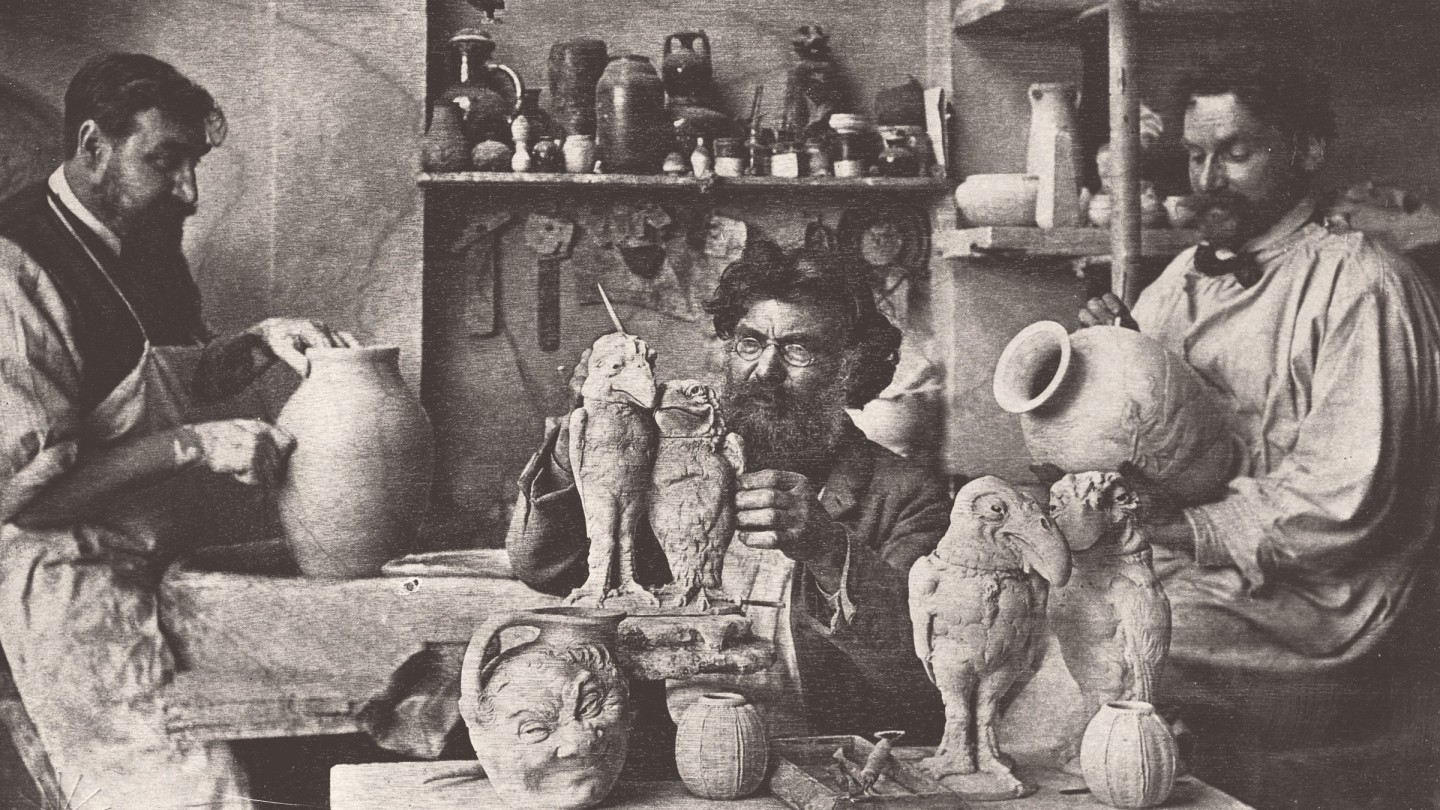
Roula Khalaf, Editor of the FT, selects her favourite stories in this weekly newsletter.
“Colossal and extraordinary grotesque grinning crab” is how auction house Phillips labelled the Victorian ceramic oddity it sold in 2018 for $275,000. “At first sight, just the physical presence alone delivers a powerful shock,” added the catalogue essay on the half-metre-wide, human-faced crustacean – all bulging eyes and toothy grin – that went on to make headlines when it was banned from export by the UK government on grounds of its “outstanding aesthetic importance”. Plymouth museum The Box stepped in to save the “national treasure”, pleasing fans of its creator: Robert Wallace Martin, the eldest of four brothers who, in 1873, founded what is regarded as Britain’s first studio pottery.
From first Fulham then Southall, Robert, Walter, Charles and Edwin Martin created individual stoneware while weaving an intriguing tale of creative genius and sibling rivalry. “You buy into their story,” explains specialist dealer Baz Stock, who runs Century Ceramics and personally owns some 25 pieces of Martinware. “The brothers were almost comically uncommercial – and slightly insane. They produced some very average, run-of-the-mill stuff – vases with brown flowers on them – but also all these funny, horrible things: grotesque little men, jugs with faces on them, the Wally Birds.”
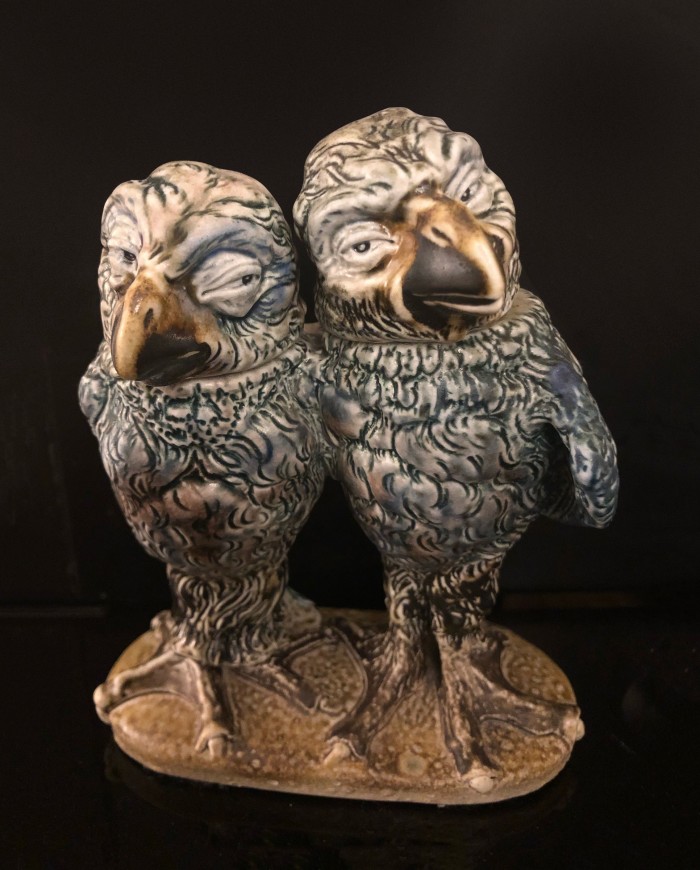
Much to his brothers’ discontent, Robert Wallace shunned commercial commissions in favour of dreaming up grotesques steeped in gothic fantasy. “Since the 1970s, these creatures have been fought over by collectors across the world,” says Michael Jeffery, associate director and 20th-century design specialist at Salisbury auction house Woolley & Wallis. “They’re popular because they’re ugly.”
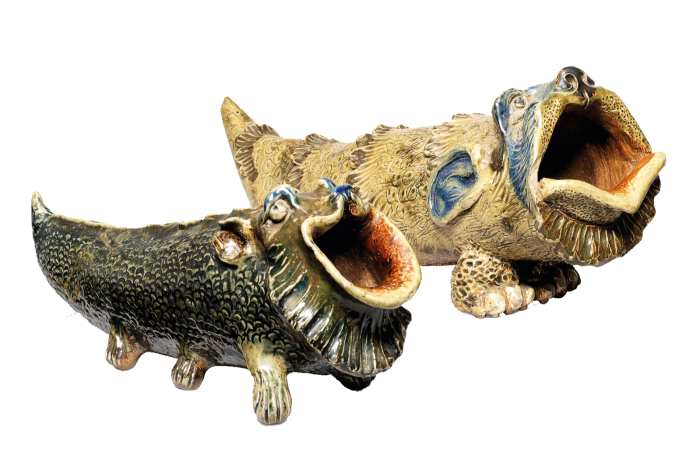
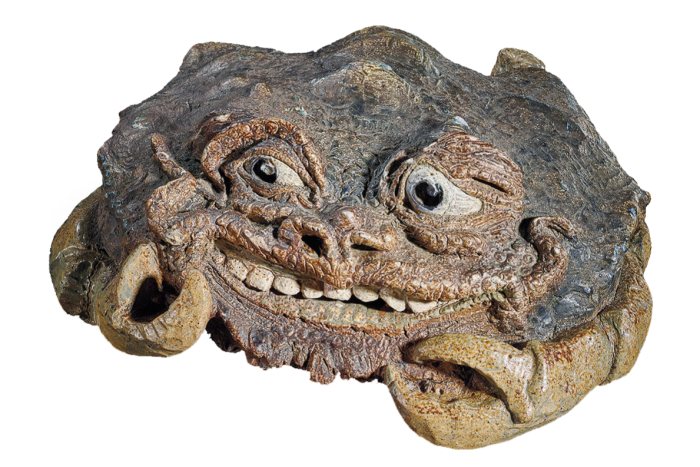
Idiosyncratic bird-shaped jars are particularly sought after. In the 2019 Woolley & Wallis sale dedicated to Martinware, a c1900 Wally Bird sold for £35,000 (while a pristine and rather pretty collection of Japan-inspired gourd vases sold for between £125 and £8,750 apiece). “At the very top end of the market, two or three collectors have been really driving up prices for birds – from about £30,000 to £100,000 in the space of two or three years,” adds Jeffery. Those with faces modelled on known figures attract the highest prices of all. In 2015, an avian take on Benjamin Disraeli fetched $233,000, while in 2018, a caricature of barrister Edward George Clarke – who represented Oscar Wilde in 1895 – sold for $175,000, both at Phillips.
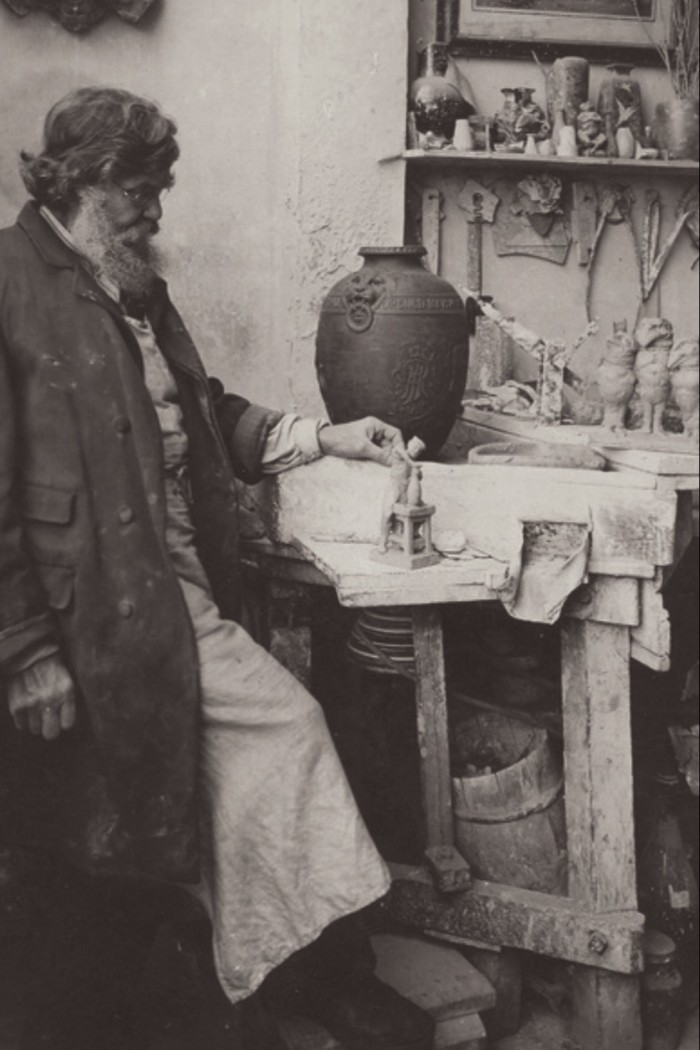
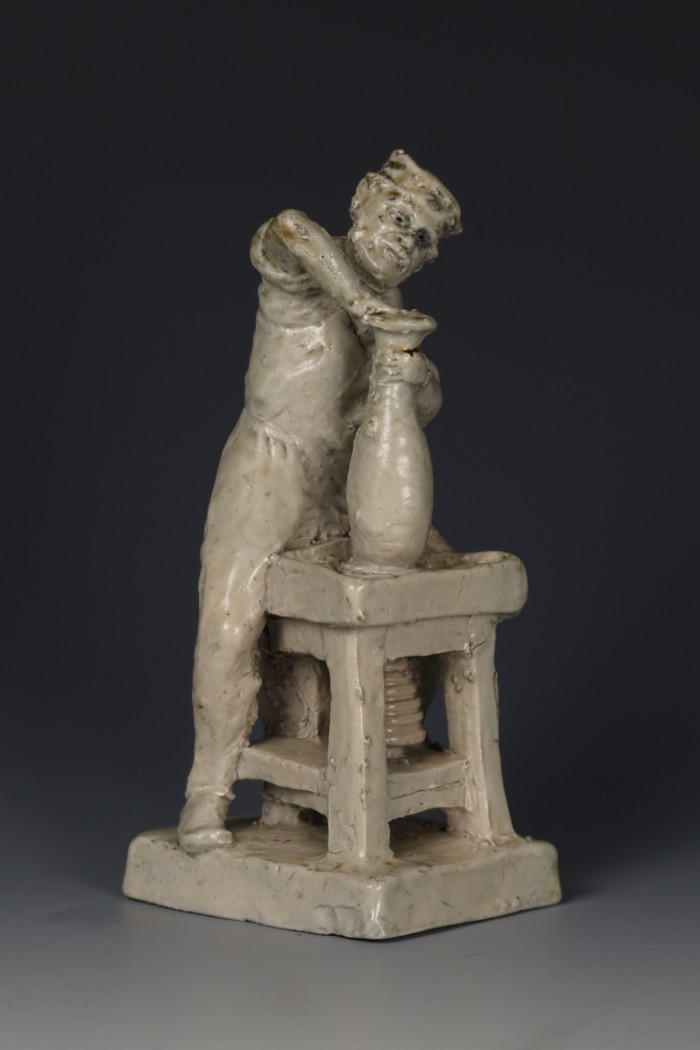
The Martin Brothers’ tale is tied in with those of Oscar Wilde, John Ruskin and William Morris – key figures in the Aesthetic Movement, which extolled a handmade counterpoint to the Industrial Age and sparked an uprising of British art pottery. “The world had become rather grey and manufactured, and out of this came a growing appetite for beautiful things,” says Stock, whose clients include iconic art duo Gilbert & George. “It was like a mini revolution of artistic endeavour, and all of a sudden, in the 1870s, small pottery studios started popping up.”
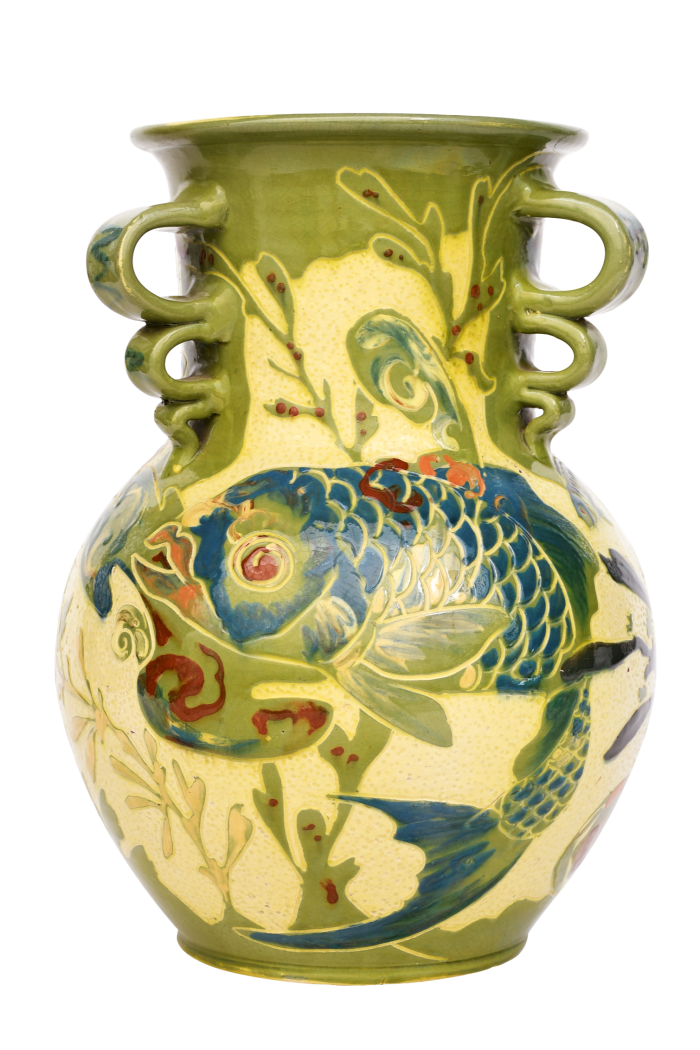
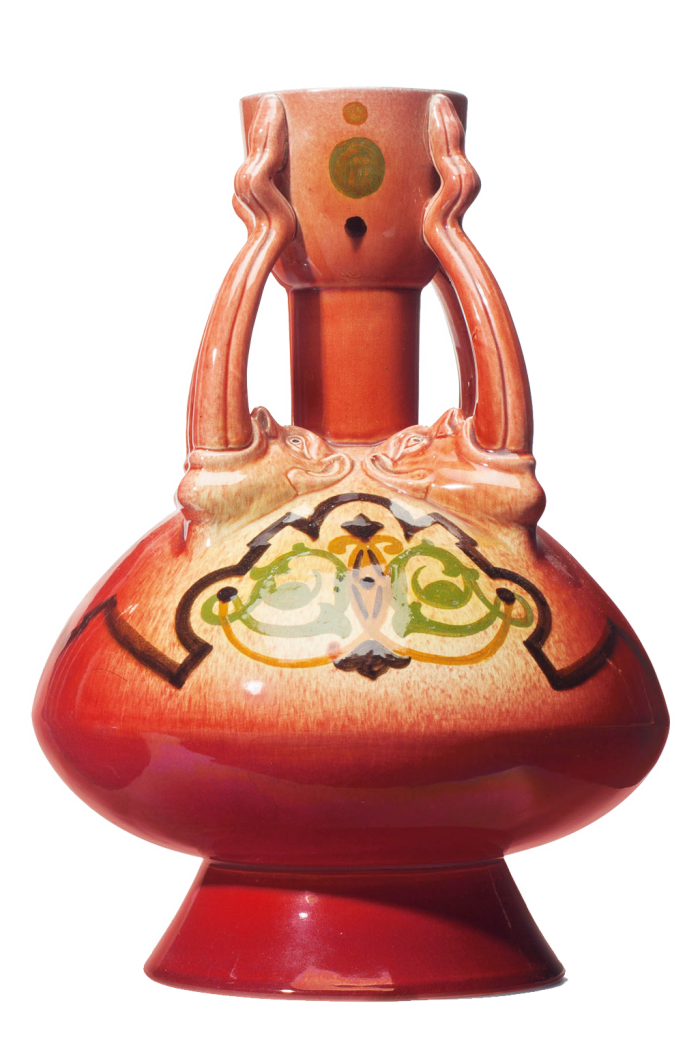
William De Morgan, a friend of Morris, set up his Chelsea pottery in 1872, creating colourful, Persian-inspired designs often bedecked with floral motifs and fantastical beasts. Linthorpe Art Pottery in Middlesbrough was established in 1878 in collaboration with revered designer Christopher Dresser, who also worked with Wedgwood and Derbyshire’s Ault Pottery. In Devon, Charles Brannam began making art ware in 1879 at his father’s pottery. Meanwhile, Pilkington’s Lancastrian Pottery was best known for the opalescent lustre glazes it developed in the early 20th century. During this period, art-pottery departments were also launched by larger ceramic manufacturers such as Minton and Doulton.
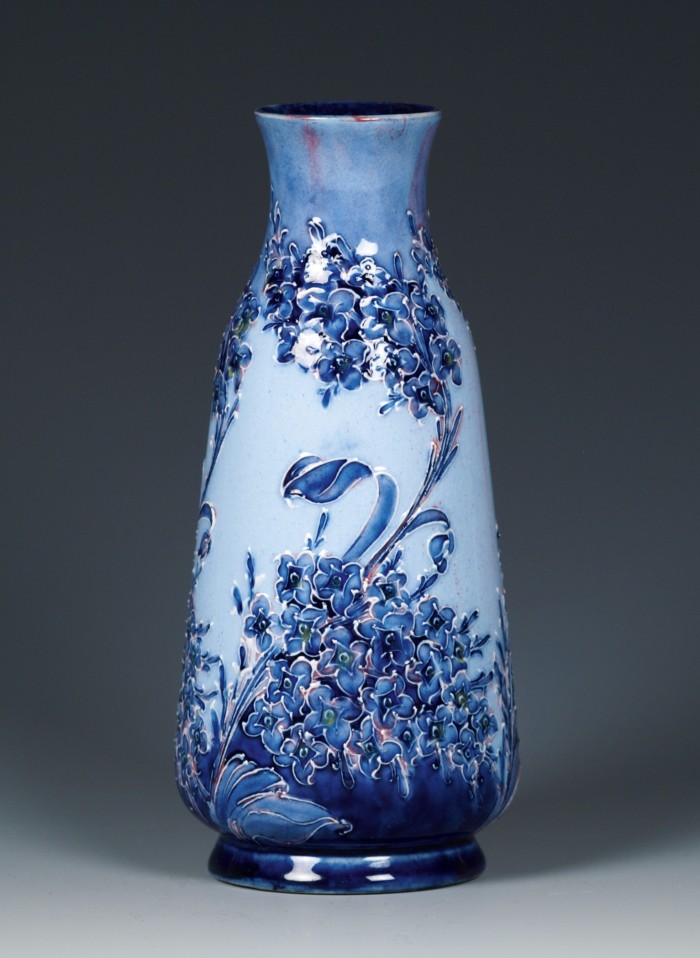
“There were many more middle-ground potteries that have gone up and down in popularity,” says New York dealer Robert Walker, who sets the Martin Brothers and William De Morgan apart at the high end of the market. “Right now, Della Robbia Pottery – founded in 1894 in Birkenhead, near Liverpool – is high on collectors’ minds.” Its Italianate earthenware is represented at Walker’s Polka Dot Antiques by an elaborate, cherub-adorned jug ($5,500), alongside a Martin Brothers figurine ($16,000) and vase ($12,500), a Brannam bowl with a woven design by Archibald Knox ($3,500) and a Doulton Lambeth stoneware vase depicting in sgraffito style (scratched into the clay) a pride of lions by the company’s best known artist: Hannah Barlow.
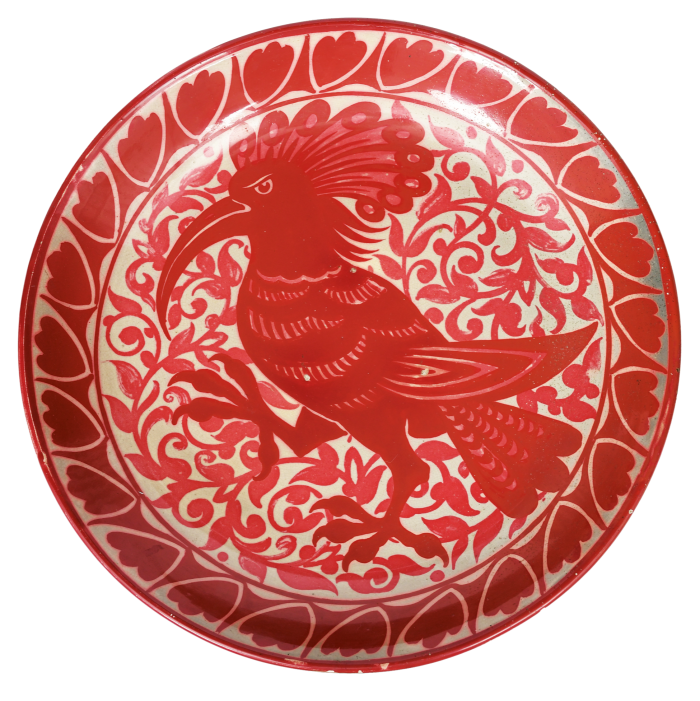
Benjamin Doller, a chairman at Sotheby’s New York, has collected about 50 pieces of British art pottery over the past 20 years. “Around 2000, I visited this incredible house in the Hollywood Hills that was absolutely full, every room, floor to ceiling, of British art pottery,” he recalls. “I was like, ‘Oh my God, I love this stuff.’” The house belonged to Allen Harriman and Edward Judd, whose huge collection was sold across several Sotheby’s auctions. A single auction in 2001, offering nearly 500 lots, grossed an “unprecedented” $3.2m – nearly $1m above the high estimate. “That’s when I started collecting,” says Doller, whose favourite pieces are by James Stiff & Sons – a competitor to Doulton in Lambeth – and a Macintyre Pottery vase in the recognisably art-nouveau style of Stoke-on-Trent’s William Moorcroft. Doller’s mahogany bibliothèque does not, however, contain any Martin Brothers wares. “I don’t use the F word often, but I would say that they are… fabulous. I love their work, but it’s out of my price range.”
In London, collector Chris Lott, a former butcher, traded 200 Doulton pieces with Stock in order to buy Martinware. “For me, they’re the ultimate thing to collect, but some people hate them. Where do you draw the line between ugly and beautiful? It all depends on your personal taste.”
Where to buy
AD Antiques adantiques.com. Century Ceramics centuryceramics.co.uk. Christie’s christies.com. Phillips phillips.com. Polka Dot Antiques polkadotantiques.com. Sotheby’s sothebys.com. Woolley & Wallis woolleyandwallis.co.uk
What to read
The Martin Brothers Potters by Malcolm Haslam (Richard Dennis Publications). The Della Robbia Pottery by Peter Hyland (Antique Collectors’ Club)
Comments